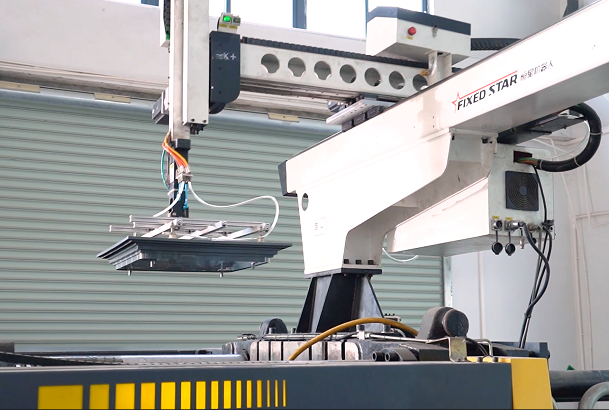Injection molding allows manufacturers to create plastic parts from a wide range of thermoplastic polymers. But what if the product is better suited to a thermoset polymer such as a polyurea or polyester?
Thermoplastic pellets can be melted and injected into a mold cavity where they cure, but thermosets do not behave this way. In order for a thermoset to cure, it must be cured by heat, radiation or mixing with a catalyst. The standard injection molding process does not allow for this.
Fortunately, it is possible to mold thermosets using a process called reaction injection molding (RIM), which was developed in the 1960s to make more impact-resistant automotive parts. Instead of melting down solid pellets, this form of injection molding uses a special mixer to combine the two liquid parts of the thermoset polymer and create a chemical reaction that allows the material to cure and harden once injected into the mold cavity.This article discusses the basics of reaction injection molding, the materials available, and the main advantages and disadvantages.
How Does Reaction Injection Molding Work?
Reaction injection molding works by mixing two parts of thermoset polymer, which react and cure when brought together. The mixture is injected into a mold cavity where curing takes place, allowing the material to solidify and form a part shaped like the mold cavity.
Although reaction injection molding tools can be very similar to the molds used for standard injection molding, the RIM process requires a special type of injection molding machine. This machine typically consists of the following components
Two Tanks to hold the two liquid parts of the thermoset material
High pressure pumps to move and meter the liquids
Mixhead to mix and dispense the two liquids
Mold to form the thermoset into the desired shape
High pressures are required to move the liquids from the tanks to the impact mixer where they are mixed at high velocity (1200 psi). However, the mixed material can often be injected into the mold at relatively low pressure. This is because the thermosets are typically less viscous than the molten thermoplastics used in standard injection molding. For similar reasons, the mold often does not need to be made of extremely hard tool steel, so inexpensive aluminum molds can be used, and the cavity can have sections of varying thickness because there is minimal risk of warping the parts during curing. The mold is typically heated to a moderate temperature to facilitate the curing process, unlike other forms of injection molding where coolant is used to speed solidification.
Curing of the thermoset in the mold typically takes between one and seven minutes, depending on the material used and the geometry of the mold cavity.
Reaction injection molding is similar to liquid silicone injection molding, although the latter does not require high-pressure mixing of the two silicone components.
Process Variations
Additional steps can be added to the RIM process to change the type of parts produced. Reinforced Reaction Injection Molding (RRIM) uses additives such as glass fibers that are fed into the impinging mixer through a separate channel. The result is parts with improved strength.
Another way to improve the strength of molded parts is to use a fiber mesh – prearranged in the mold cavity – as a reinforcing agent. This is called structural reaction injection molding (SRIM).
Materials for Reaction Injection Molding
Several thermoset materials can be used in reaction injection molding. The most commonly used materials are
Polyurethanes
Elastomeric Polyurethane
Polyurethane Foams
Structural
Rigid
Flexible
Polyureas
Polyisocyanurates
Polyesters
Polyphenols
Polyepoxides
Nylon 6
Advantages of Reaction Injection Molding
Reaction injection molding has many advantages. In addition to the ability to produce molded parts with thermoset polymers, the process has several advantages over standard injection molding.
The low-viscosity liquid materials make it possible to produce large, thin-walled parts. And because the parts do not thermally contract in the mold, it is possible to have varying wall thicknesses throughout the part if desired. Because of the low injection pressure, low clamp forces are required, reducing setup time and cost. In addition, inexpensive aluminum molds are sufficient for many parts.
Because of the materials used, reaction injection molded parts are typically lightweight and flexible, which can be advantageous in many applications. RIM foams have a low-density core with a tough, high-density skin.
Limitations
One disadvantage of RIM is the high cost of raw materials compared to thermoplastics. Another is the need for a dedicated RIM machine. In addition, cycle times are slower than standard injection molding, although faster than other thermoset molding processes such as vacuum casting.
Reaction Injection Molding Applications
Reaction injection molding is a valuable process for producing lightweight parts such as automotive components and high-strength packaging foams.
In the automotive industry, where the first applications of reaction injection molding were developed in the 1960s, RIM is now widely used to produce parts such as bumpers, air spoilers, fenders, body panels, trunk lids, and insulated cab floors. Other applications include sports equipment (e.g., inner foam in helmets), furniture, packaging, electronic enclosures, and machine housings. RIM may also be preferred over injection molding for unique geometries (such as oversized parts with varying wall thicknesses) or for overmolding and insert molding.
Injection Molding with MY Prototyping
MY Prototyping offers a variety of injection molding services, including thermoplastic, silicone, and metal injection molding. We also offer a reliable and affordable urethane molding service for rigid or flexible parts. Contact us for a free quote.

Disclaimer of Warranty
The contents of this website are provided for informational purposes only. MY Prototyping makes no representations or warranties of any kind, express or implied, as to the accuracy, completeness or validity of the information. Any performance parameters, geometric tolerances, specific design features, quality and types of materials, or processes should not be inferred to represent what will be supplied by third party suppliers or manufacturers through MY Prototyping’s network. Buyers seeking instant quotes for parts are responsible for defining the specific requirements for those parts. Please see our Terms and Conditions for more information.






